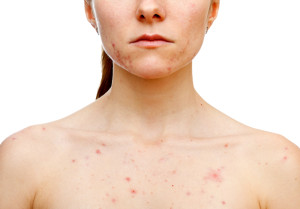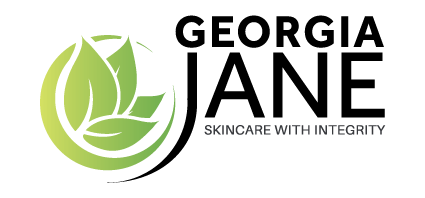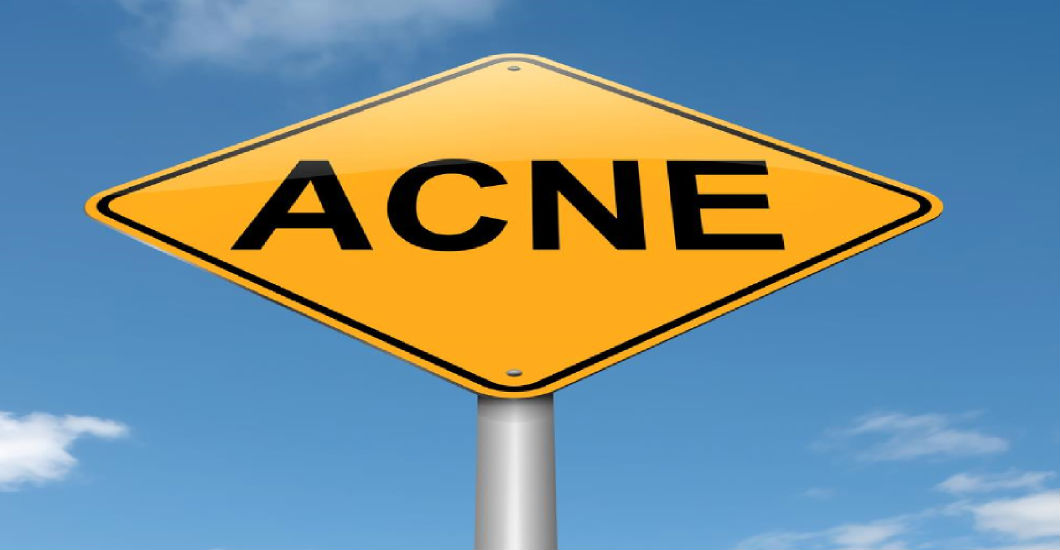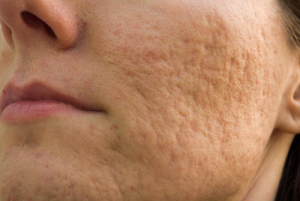I thought that I would do a post on my old nemesis, Acne Vulgaris. Developing adult acne in my mid twenties is the reason that I have found myself in the cosmetic industry and while it made my life a misery for a long time, I found that a) retreating under the duvet or b) lashing layers of make up on didn’t help (trust me!) but having tried all the conventional and harsh medical approaches with either no results or awful side effects, acne gave me a challenge and there is nothing I love more than a good challenge! It gave me the impetus and determination and bloody mindedness to heal myself. The medical term for common acne, Acne Vulgaris, is one of the most common skin diseases and it can be so distressing and quite debilitating for the sufferer causing lack of confidence and embarrassment. It is commonly characterized by pimples on the face, chest, and back which can be very sore not to mention unsightly! It occurs when the pores of the skin become clogged with oil, dead skin cells, and bacteria. While acne can arise at any age, it usually begins at puberty and worsens during adolescence. However, acne, can be troubling not only for teens but for anyone. It is not unusual for adults to seek treatment for acne (and rosacea). These sometimes painful and infected skin blemishes have been an affliction of torment for many and sometimes, it seems, like nothing will work.
The Sci-ency bit…… Just underneath the skins surface lie the sebaceous glands. These glands produce an oil called sebum which is our skins natural moisturiser. The sebaceous glands contain hair follicles and lie just beneath the skin’s surface. These glands and the hair follicles within which they are found are called sebaceous follicles. These follicles in turn open onto the skin through the pores. At puberty, increased levels of androgens (male hormones) cause the  glands to produce too much sebum. When this overload of sebum combines with dead, gluey skin cells, a compacted plug, or comedone, forms which in turn blocks the pore and its hello whiteheads and blackheads. Incidentally these two types of comedones are the most mild and common non-inflammatory types of acne.
glands to produce too much sebum. When this overload of sebum combines with dead, gluey skin cells, a compacted plug, or comedone, forms which in turn blocks the pore and its hello whiteheads and blackheads. Incidentally these two types of comedones are the most mild and common non-inflammatory types of acne.
Moving on to the more severe form, we see the moderate and severe inflammatory types of acne. These result after the plugged follicle is invaded by Propionibacterium Acnes, which is a bacteria that normally lives on the skin. A small pimple forms when the injured follicle weakens and bursts open, (lovely) releasing bacteria and dead skin and white blood cells into the surrounding tissues. These inflamed pimples near the skin’s surface are called papules and when they occur deeper in the dermis, they are called pustules.
As any wound heals, the body will sometimes produce an overabundance of collagen, which can create an accumulation of raised tissue on the surface of the skin. This type of scarring is called hypertrophic, or keloid, scarring and these scars tend to be larger than the original wound itself, oh the bloody unfairness of it all!
More commonly, acne causes atrophic, or depressed, scars. These occur when the underlying structures supporting the skin, such as muscle or fat are lost and is a type of scarring often associated with acne. One common example would be ‘Ice Pick’ scarring, where the scar takes the form of an indented recess in the skin, which has a pitted appearance.
Inflammation is the single greatest indicator of how a scar will develop. Unfortunately the greater the inflammation on the skin is like a barometer for how more likely scarring is to occur. Very deep breakouts, such as those that occur with Cystic Acne can take a long time to heal which also increase the chance of scarring. The blackheads, whiteheads and other non-inflamed imperfections typically don’t cause scarring because generally these types of lesions don’t injure the skin tissue…. however there is a caveat!
I know its common sense and you’ve heard it a thousand times…… Please try and resist the urge to pick, squeeze, annoy or downright harass that pimple! I know its hard, I don’t always follow my own advice but it is imperative to avoid causing a bigger problem than the one you have! Interfering with that (but its just ready to pop….) spot can force the dross deeper into the dermis, spreading the infection on to other uninfected tissue which in turn worsens the inflammation.
Result? A lovely hot red mess that is thrice the size of the original spot, oh and the scar potential raised 100%. But hey, at least everyone will see you coming….. from VERY far away……. I know that’s NOT the kind of attention you were striving for on your night out! So please ladies and gents, resist!
Picking at scabs also needs to be avoided, a scab is our skins natural band aid and its purpose is to protect the wound as it heals, picking at it or worse before it is ready only prolongs the healing process and again boosts the chance of scar formation. There is often a condition that occurs too, called post-inflammatory hyper-pigmentation or PIH.
This is a medical term given to the discolouration of the skin that can follow on from any inflammatory wound, it is the skin’s natural response to inflammation. They can vary in color from pink, purple, red or brown or black depending on your skintone. You can identify post-inflammatory hyper-pigmentation easily enough by carefully examining your skin, however the skin should not be pitted or depressed and it may look like a discoloured blotch on the skin, this can even appear shiny or look like “new skin”. PIH is very common among acne sufferers, can occur in all skin types, although it is more common in darker skin tones. It affects both men and women equally. Fortunately, PIH is not a true scar and this temporary discolouration of the skin will eventually fade on its own. 
So what can be done on a practical level and for those who want to avoid sometimes harsh medical intervention which, by the way can and does help certain types of severe acne but not without side effects. Some people may choose prescription medication out of sheer desperation and this is absolutely their choice and I’m not knocking medical intervention, its just that I chose a more holistic way of dealing with acne issues.
Firstly, you may want to try a new skin regime to see if you can eliminate the eruptions and heal your skin. Although acne can occur in the dry/sensitive skin-type it is most common in the oilier and combination skin, which is what I am going to focus on here.
Read through the information on this page to see if some of the suggestions and tips here will help with your acne. For someone it may just be the prompt they need to try something different in your quest for clear and healthy skin.
To begin with, your natural acne remedy may include recommendations on eating a diet in which you eliminate sugar and refined processed foods. (Sugar causes a reaction in many peoples bodies that can cause acne eruptions to appear overnight.) Eating plenty of vegetables preferably raw, whole grains and lean meats can also help. Fruit as lovely as it is should be limited due to the sugar content.
What you need to try and do is introduce some balance to your skin, keeping it scrupulously clean without stripping it and avoiding products with alcohol in them, this is crucial. Using essential oils in the proper and safe amounts are also another way to re-balance the acne prone skin very effectively and used judiciously and safely within their correct limits they are very powerful healing tools for all types of skin problems. Another thing to remember is it takes some time to re-balance the skin, mine took a good 3 months to become ‘normalized’!
Also although oily skin may not look like it needs more oil, (bright slick shiny skin anyone?!) it still needs hydration and although appears oily on the surface can be parched and dehydrated underneath. So don’t make the mistake of skipping the moisturiser or facial oil or resort to alcohol based toners/products…. Biology is wonderful folks! Your skin will think its in a state of drought and pump up the production of sebum to make amends….. catch 22! Remember oily skin needs moisture and the right moisture giving botanicals will feed the skin without blocking the pores and re-balance the dry areas without starting the whole acne cycle again.
Water, many people never drink plain water. Look its not a miracle worker, you are not going to morph into Gisele Bundchen if you drink a gallon a day (unless you are already that way inclined… lucky you!) but your body needs good old plain water for internal cleansing, to provide moisture to your ‘internal workings’ and just to keep the body functioning at its optimal smooth order. This includes the skin which as we know it is the biggest organ in our body so its important to keep up a good daily intake.
Cleansing: You’ll want to clean your skin thoroughly and keep it scrupulously clean. Using soap on your face can be very drying so avoid if possible. You may want to try using a specially formulated cleanser for your skin type. Cleansing your skin should be at least a twice daily routine. Also after you are done cleansing, etc. try to keep your hands off your face. Touching your skin can introduce germs and dirt that might also trigger blemishes.
If after cleansing you wish to use a toner, use a simple toner based on floral water and to compliment your skin type, avoid alcohol based toners like the plague… I actually don’t think toners are necessary, just my own opinion, if your face has been cleansed correctly with an effective cleanser there should be no residue to remove. However I do like facial mists which are designed to be left on the skin, can be used over makeup and refresh the skin, impart moisture if your skin needs its and can calm and cool reddened skin caused by exercise or the dreaded ‘hot flashes’. Hmm, oh joy….can’t wait for THAT particular phase of my life to start.
Another thing I want to talk a little about is exfoliation. There are two types, fruit enzymes and very fine mechanical exfoliators or AHA’s which are chemical. This is key especially in the 30s and 40s where skin turnover has slowed down and the dead skin just sits there, preventing any active skincare from getting where it needs to get to do its work. The fanciest most expensive skincare in the world won’t make a jot of difference if it’s just sitting on top of old dead skin unable to preform its work! I’m not however talking about harsh or very abrasive exfoliant products that can actually cause tiny tearing injuries to your face but very fine spherical shaped exfoliates that will gently exfoliate without causing injury. Some may need to do an exfoliating scrub once a week. Others only need to do this occasionally, twice a month, it all depends on your skin make-up but one thing for sure is that all skin over the age of 25 needs it in some form or another!
I am going to do a whole post devoted to exfoliation and why it is important in the next couple of weeks, so keep an eye out!
I hope this post helps anyone who is struggling with acne or any skin issues, it can be soul destroying and disheartening but there is always an answer, whether in nature or medically so take heart, you are not alone and by taking control of your diet and avoiding known triggers and keeping a ‘skin diary’ which is useful for pinpointing stresses that may be reoccurring and of course hormonal changes. Most importantly be kind to yourself, acne is not your fault, it is not something you caused or deserved, it is caused by overactive oil glands, excess dead skin cells within the hair follicle/pore and a proliferation of the acne-causing bacteria, Propionibacterium Acnes, it can even run in families!
*Please note that I am not a medical doctor and the information provided on my website and via other social media channels is for personal information and interest only. It is not intended to offer professional medical advice or treatment for any condition. Please don’t use my blog or web site or any advice within to treat health conditions or to self-diagnose.
So don’t beat yourself up, try and take control of your acne instead of letting it control you, I did and so can you!
Wishing you healthy skin always,
Michele XX


